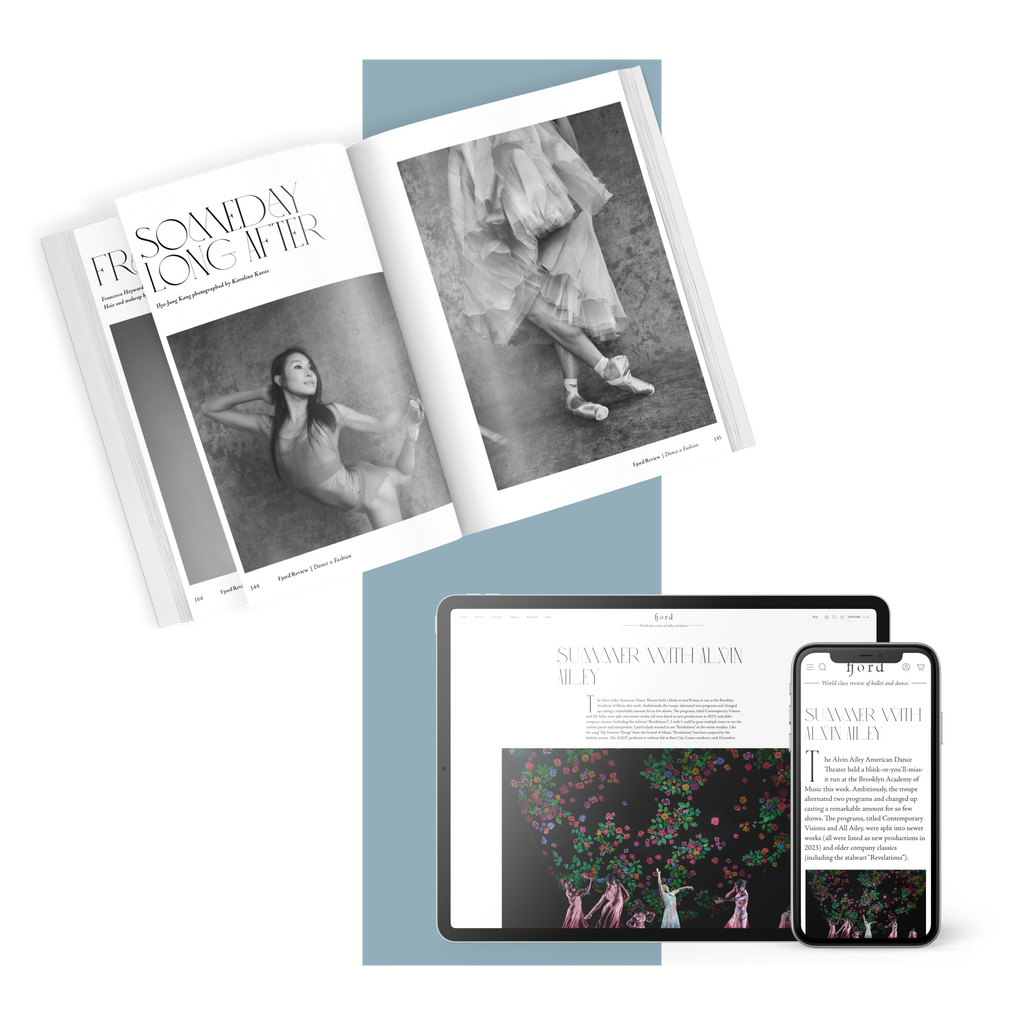Spellbound
Two performers crawl in on hands and knees wearing neon green, hooded coveralls—the lightweight papery kind made for working in a sterile environment—and clusters of balloons pinned to their backs.
Continua a leggere
World-class review of ballet and dance.
Time. One of life’s great imponderables becomes one of the topics in a soaring meditation in the T.S. Eliot literary masterpiece, Four Quartets. First published in 1943, the work, divided into four sections/poems, served as the starting point for the brilliant dance of the same name choreographed by the celebrated New York-based dancemaker Pam Tanowitz. First presented in 2018 at Bard College—a co-commission between Bard Fisher Center, Barbican London, Lincoln Center for the Performing Arts and CAP UCLA, where it was seen over the weekend—the work was hailed by the New York Times’ Alastair Macaulay as “dance theater of the highest caliber.”
Performance
Place
Words

Pam Tanowitz's “Four Quartets.” Photograph by Reed Hutchinson/CAP UCLA


“Uncommonly intelligent, substantial coverage.”
Your weekly source for world-class dance reviews, interviews, articles, and more.
Already a paid subscriber? Login
Two performers crawl in on hands and knees wearing neon green, hooded coveralls—the lightweight papery kind made for working in a sterile environment—and clusters of balloons pinned to their backs.
Continua a leggereWill Rawls makes boundaries visible by defying them. Known for the disciplinary and topical range of his projects, the choreographer, director, and performer approaches issues of representation in “[siccer],” a multi-part, multi-site work co-presented by L’Alliance New York’s Crossing the Line Festival. A live performance at Performance Space New York accompanies a multimedia installation at the Kitchen, a book published by Wendy’s Subway, and an album published by the artist. With a creative process reaching back to 2018, the work delves explicitly into pandemic-era energies and inertias with focused intimacy and a pervasive sense of instability.
Continua a leggereIt is always interesting when multiple theme steps emerge over the course of a mixed repertory evening, but it is uncanny on one featuring five different ballets, each with a different choreographer and composer, covering a twenty-year span (2005-2025).
Continua a leggereZvidance premiered its new work “Dandelion” mid-November at New York Live Arts. Founded by Zvi Gotheiner in 1989, Zvidance has been a steady presence in the New York contemporary dance scene, a reliable source of compositional integrity, and a magnet for wonderful dancers.
Continua a leggere
comments